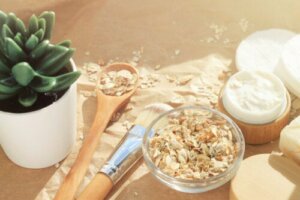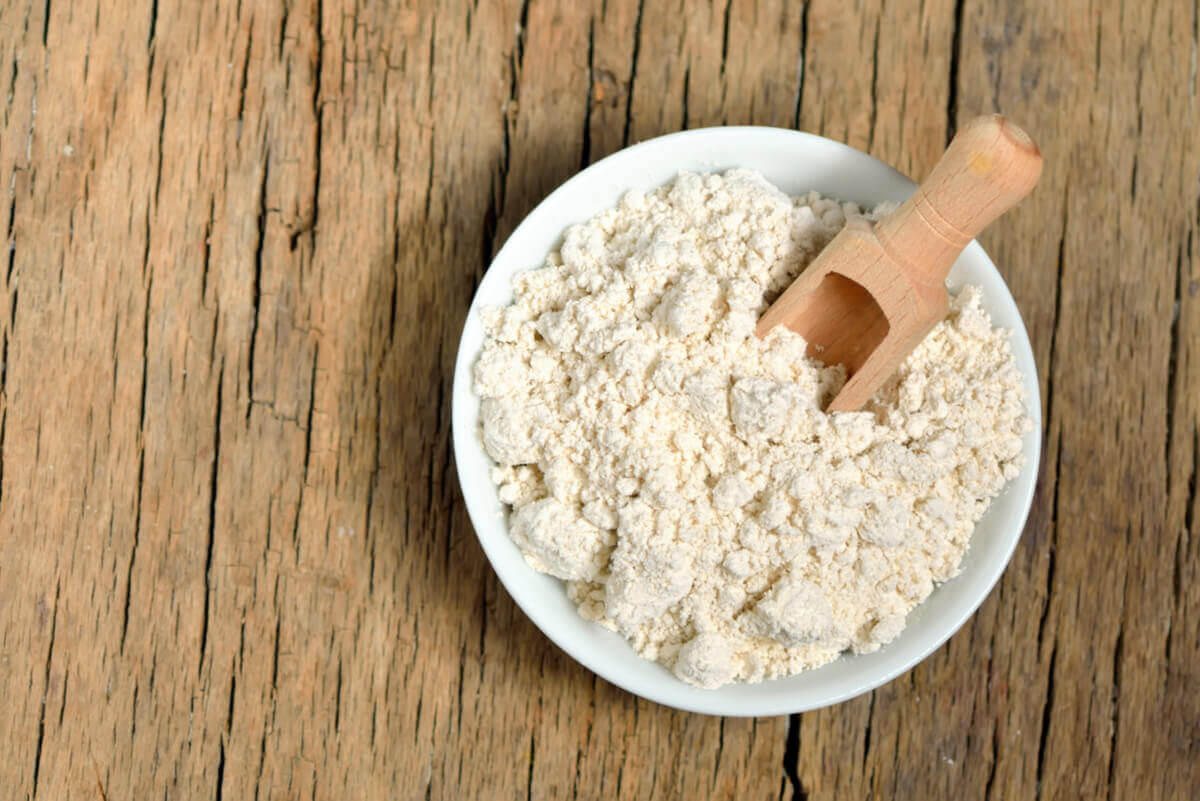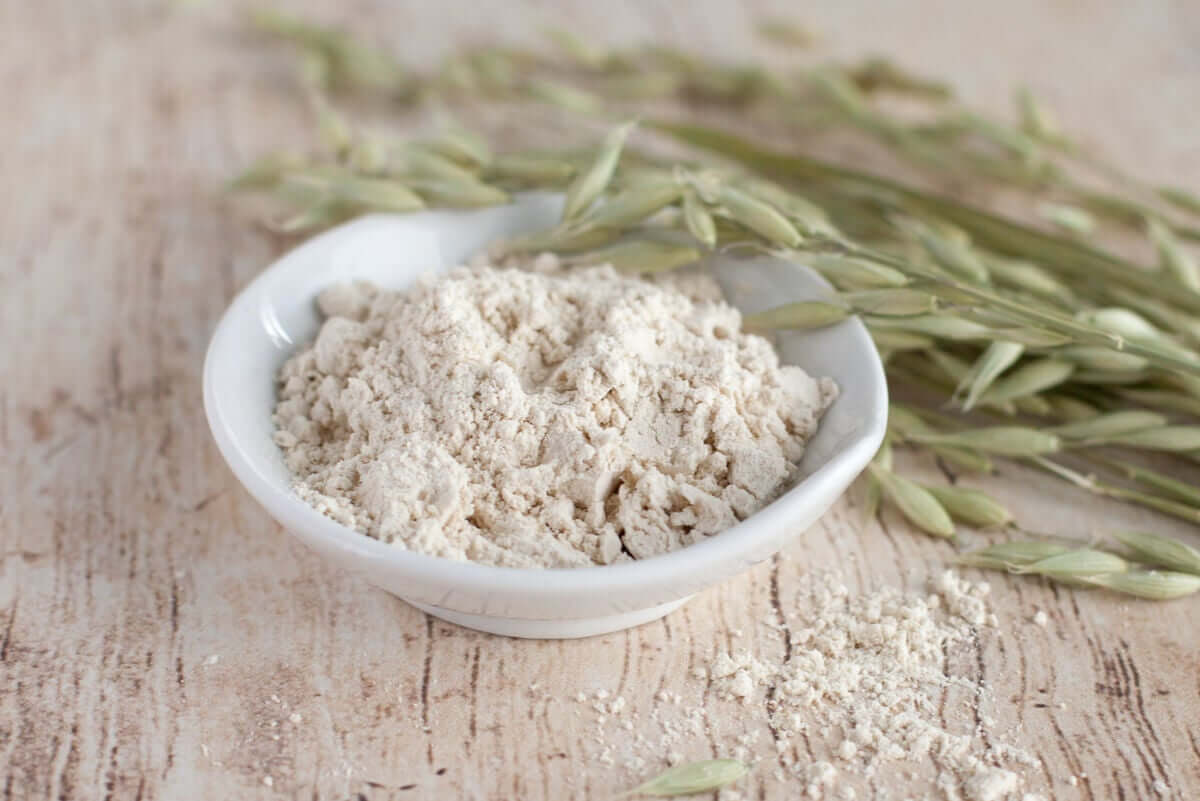What Is Colloidal Oatmeal and What Are Its Benefits?

Colloidal oatmeal is a natural ingredient that’s popular due to its many benefits for skin health. According to an article published in the Journal of Drugs in Dermatology, this oatmeal is a calming agent and is regulated by the United States Food and Drug Administration (FDA) due to its pharmacological use.
In fact, this product is readily available in an assortment of formats, from bath powders to shampoos, shaving creams, and lotions. So what are the benefits of this product and how do people usually use it?
What is colloidal oatmeal?
Colloidal oatmeal is made by grinding oat grains (Avena sativa) into a fine powder. Today, the cosmetics industry uses this product in a wide range of formulas for personal health, especially in skincare products.
One study in Clinical, Cosmetic and Investigational Dermatology explains that colloidal oatmeal has a complex chemical composition and consists of polysaccharides, lipids, proteins, flavonoids, vitamins, and minerals. Additionally, consumers value this ingredient for its hydrating quality, as well as its anti-inflammatory and antioxidant properties.

Benefits of colloidal oatmeal
The nutritional composition of oats grants its consumers a range of health benefits, especially when treating skin conditions. Because of its anti-inflammatory properties and emollients, it helps repair damaged skin and can relieve some conditions, such as:
- Rashes
- Skin patches
- Itch and eczema
- Dry skin
- Atopic dermatitis
- Burns
- Diaper rash
The emollients found in oats smooth and hydrate the skin, which helps alleviate symptoms like itching and flaking. Of course, there are many natural products that can help with skin issues but many people choose oatmeal because it can be used for all skin types.
Studies suggest that colloidal oatmeal can also be used to combat harsh symptoms of xerosis and extremely dry skin. This treatment is safe, tolerable, and can even help reduce the need for topical cortisone steroids, thus avoiding potentially uncomfortable side effects.
Now, we should make it clear that colloidal oatmeal is not a first-line defense in preventing skin problems. When it comes to moderate-to-severe burns, acne, and dermatitis, you should always first visit a dermatologist to learn about other treatment options. Oat products are often used along with other medications to soothe skin discomfort.
You might also like: 6 Simple Tips to Keep Your Skin Hydrated
How to use this ingredient
The most common way to use colloidal oatmeal is in an oat bath, where you mix the fine powder into bathwater. However, as we previously mentioned, oat gels, lotions, salves, and a variety of other products are also available.
Be sure to carefully follow the instructions as indicated on the packaging and, if you have any questions, contact your doctor or pharmacist. You should apply colloidal oatmeal lotions to the affected areas as necessary. If you have dry hands, we recommend applying the lotion every time you wash your hands.
Similarly, when using an oat salve or lotion to treat diaper rash, you should always properly wash and dry the area before applying. It’s wise to exercise caution or avoid putting salves or creams on sensitive areas such as around your eyes, in your mouth and nose, and on the genitals. Don’t apply to broken, cracked, or scratched skin.
Are these products safe?
Colloidal oatmeal is safe for most people. In fact, to this day there’s no record of negative side effects after its use.
Even still, however, we don’t recommend using any oatmeal products to treat skin conditions if you have a known oat allergy or are sensitive to oat by-products. If your itch worsens or you develop a rash after using colloidal oatmeal, stop all use.
How to prepare colloidal oatmeal at home
While it’s certainly convenient to buy ready-made colloidal oatmeal at the store, you can also make it at home in just a few simple steps. The end product is ideal to add to your bath or to make a natural mask.
Ingredients
- 1/2 cup whole oats (125 grams)
- A food processor or blender
Method
- To begin, add the raw, whole oats to your food processor or blender.
- Turn it on until the oats form a soft, fine powder.
- To see if the powder is fine enough, mix a small amount into water. If the water turns a milky-white, your homemade colloidal oatmeal powder is ready.

Read more: Skin and Hair Mask with Yogurt and Honey
Colloidal oatmeal is a soothing ingredient for the skin
There are many reasons to add colloidal oatmeal to your skincare routine. It’s a mild ingredient that even people with the most sensitive skin can use, and, due to its composition, it helps protect skin and fight dryness.
The most interesting thing about this product is that it’s available in many formats and can even be prepared easily at home from whole oats. What do you think, will you try it? Remember to talk with your dermatologist if you have any questions or concerns.
All cited sources were thoroughly reviewed by our team to ensure their quality, reliability, currency, and validity. The bibliography of this article was considered reliable and of academic or scientific accuracy.
- Kurtz ES, Wallo W. Colloidal oatmeal: history, chemistry and clinical properties. J Drugs Dermatol. 2007 Feb;6(2):167-70. PMID: 17373175.
- Criquet M, Roure R, Dayan L, Nollent V, Bertin C. Safety and efficacy of personal care products containing colloidal oatmeal. Clin Cosmet Investig Dermatol. 2012;5:183-193. doi:10.2147/CCID.S31375}
- Reynertson KA, Garay M, Nebus J, Chon S, Kaur S, Mahmood K, Kizoulis M, Southall MD. Anti-inflammatory activities of colloidal oatmeal (Avena sativa) contribute to the effectiveness of oats in treatment of itch associated with dry, irritated skin. J Drugs Dermatol. 2015 Jan;14(1):43-8. PMID: 25607907.
- Fowler JF Jr. Colloidal oatmeal formulations and the treatment of atopic dermatitis. J Drugs Dermatol. 2014 Oct;13(10):1180-3; quiz 1184-5. PMID: 25607551.
-
Diluvio L, Dattola A, Cannizzaro MV, Franceschini C, Bianchi L. Clinical and confocal evaluation of avenanthramides-based daily cleansing and emollient cream in pediatric population affected by atopic dermatitis and xerosis. G Ital Dermatol Venereol. 2019 Feb;154(1):32-36. doi: 10.23736/S0392-0488.18.06002-9. Epub 2018 Sep 12. PMID: 30207438.
This text is provided for informational purposes only and does not replace consultation with a professional. If in doubt, consult your specialist.








